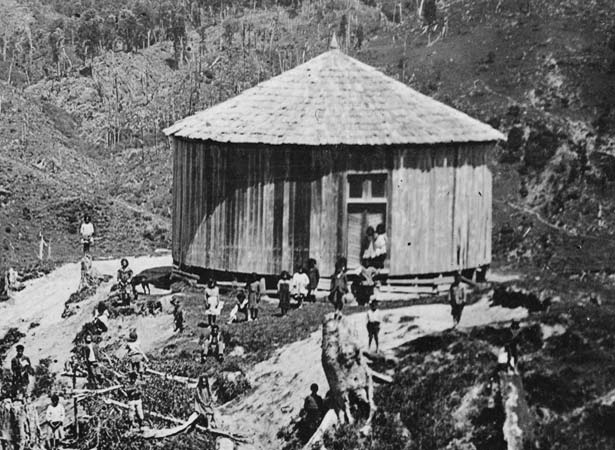
A milling road built by the Bayten Timber Company provided the first vehicle access to the remote Urewera settlement of Maungapōhatu – famous as the former home of the prophet Rua Kēnana.
The road was opened by Sir Eruera Tirikātene, who, as Minister of Forests (1957–60), had pushed for its construction despite the opposition of his department. Undeterred by torrential rain, more than 1500 people attended the opening celebrations, traversing the steep, winding road in 12 buses and 200 cars and trucks.
For a few years the milling operation brought modest prosperity to this isolated and impoverished area, which had never recovered from the exodus of most of its inhabitants. According to Rotorua’s Daily Post, the permanent population of Maungapōhatu in 1964 was just 15.
For a time in the 1920s it had seemed possible that Maungapōhatu might become economically viable. At Rua’s urging, Ngāi Tūhoe had donated 16,000 ha of land to the government in 1922 so that roads could be built to connect the settlement with eastern Bay of Plenty and Ruatāhuna. Construction was expected to start in 1927, but the roads were never built. By the early 1930s most of the local people had left to seek food and employment elsewhere (Tūhoe finally received some monetary compensation for their gift in 1958).
Rua Kēnana died at Matahi, a community he had founded on the Waimana River, in 1937. His hopes that Tūhoe could live fruitfully on their own lands and take control of their own lives came closer to fulfilment in 2013 with agreement between the Crown and the iwi on a Treaty of Waitangi settlement and redress package.
Image: the school at Maungapōhatu, about 1921 (ATL)
How to cite this page
'Opening of first road to Maungapōhatu ', URL: https://nzhistory.govt.nz/page/opening-first-road-maungapohatu, (Ministry for Culture and Heritage), updated 16-Feb-2023
